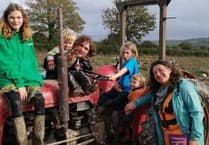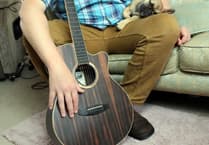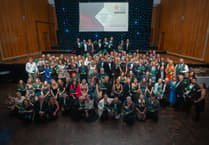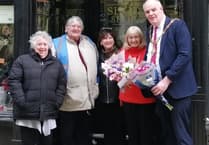I had an appointment in Liskeard so afterwards took a walk around the town. First place I went was a very autumnal looking Westbourne Gardens and was surprised and disappointed to see hundreds of conkers laying beneath the horse chestnut tree, although the tree looked beautiful.
Why is it that our youngsters prefer to spend their free time using electronic games and texting their mates who they have just spent all day with in school? Weekends are the same, instead of spending some time in the parks and out in the countryside getting some fresh air, they are indoors, probably in their bedrooms working their fingers and thumbs on a keypad.
Meanwhile, all these conkers are going to waste. During my time at Landrake School during the forties, boys and girls all played conkers saying, with pride, that their conker had destroyed six or seven of their mates chestnuts and so far, as I remember, nobody cheated by saying their conker had beaten more than they really had. My picture shows some of these fighting chestnuts including one that was already threaded onto a bootlace ready for action.
A lone primrose plant growing beneath the trees had four blooms on it, such lovely flowers to see anytime of the year and walking along Sun Girt Lane I spotted a lesser periwinkle – Vinca minor – trailing over the hedge. Now, this one is either an early bloom or a very late one as they usually flower from February onwards.
On the bank beside Eastern Avenue there were some great mullein – Verbascum thapsus – flowers, also known as Aaron’s Rod which refers to an Old Testament story of the staff that burst into bloom. I think somebody, probably a nearby resident, planted these lovely flowers which unfortunately hardly ever bloom all the way up the stalk at the same time, instead opening randomly so one stalk has flowers for quite a while.
On the opposite side of the main road a spindle tree was loaded with thousands of red and orange berries. This tree is grown mostly in gardens and parks nowadays, but for thousands of years their thin hard stems were fashioned into a stick, called a spindle, to spin wool for the making of garments. I think a lot of women were very pleased when the spinning wheel was invented.
When I am walking, I always look over fences into fields and gardens and I noticed a crab apple tree loaded with tiny red apples. Although they are a bit fiddly to eat, they can be made into an excellent jelly and certainly add colour to the garden after their pinkish/white flowers have gone. Some say that the crab apple is the parent of all cultivated apples and its name, crab, is derived from an Old Norse word, skrab, meaning small, rough tree.




